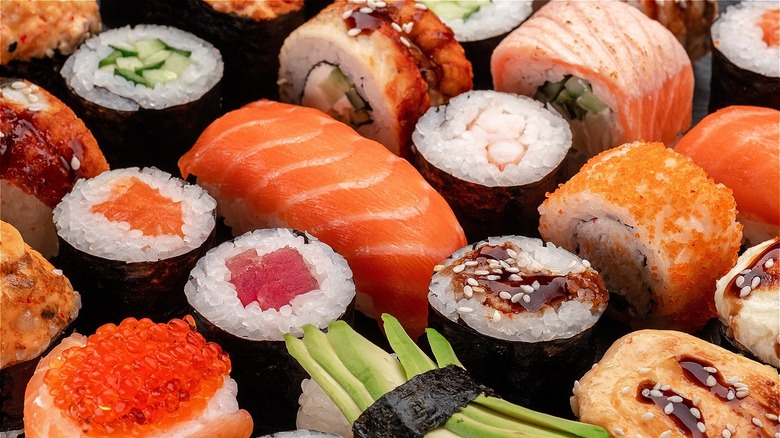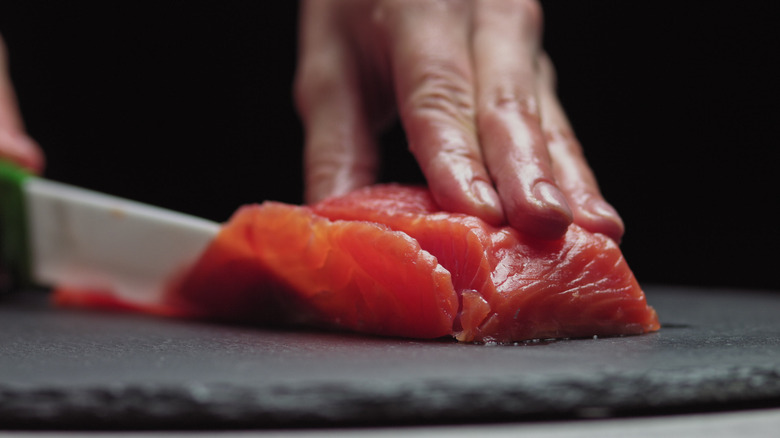The Sushi Restaurant Red Flag You Should Never Ignore
Sushi can be a hard sell for some folks. The concept of eating raw fish wrapped in rice can be nerve-racking or even make people a bit squeamish. Sushi-grade fish and shellfish are actually very safe to eat and have been for centuries — long before sushi was introduced to the Western world. Of course, if fish comes out looking pale and drab, smells overly "fishy," or feels too slimy to touch, your food-safety sensors will usually go off and prevent you from taking a bite. However, if any of these aspects are true of a sushi dish you've ordered, do not eat it!
A foul smell or strange texture may be a clear indicator of a dish that has gone bad, but there are other, more subtle cues you should look out for when you go out for sushi — there's one in particular that can be spotted before even taking a seat. After entering a sushi restaurant, it is vitally important that you can see the sushi bar and chef out in the open. If the restaurant only has a closed-off kitchen, it's probably best to stick to the teriyaki menu.
Avoid closed kitchens at sushi restaurants
While many sushi restaurants do use closed kitchens to prepare noodles, tempura, teriyaki bowls, or other hot entrées, it is important that they have an open sushi prep area. It may not seem like a big deal where sushi is prepared, but this actually can tell you a lot about the quality of the fish being served. Quality sushi restaurants typically have a bar area where diners can not only admire the sushi chefs at work but also see what fresh fish they have in stock.
Because sushi-grade fish filets are so high-quality, they typically have stunning bright colors that any chef would be proud to show off. So, if a restaurant conceals fish behind its kitchen doors, it might not look as impressive to guests. This can indicate that the restaurant may be using less-than-fresh fish or cheaper products like imitation crab meat, which is similar to what is offered in grocery store sushi. Using fake crab meat doesn't mean the fish is spoiled, but be wary of restaurants that promise top-quality sushi without highlighting their wares.

